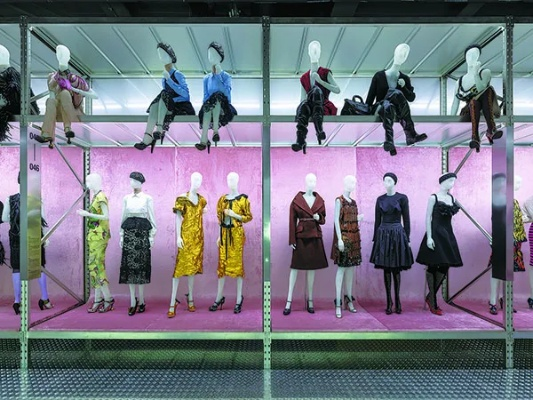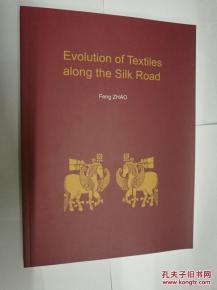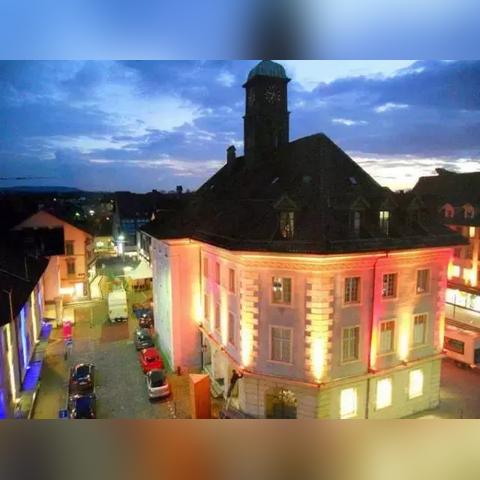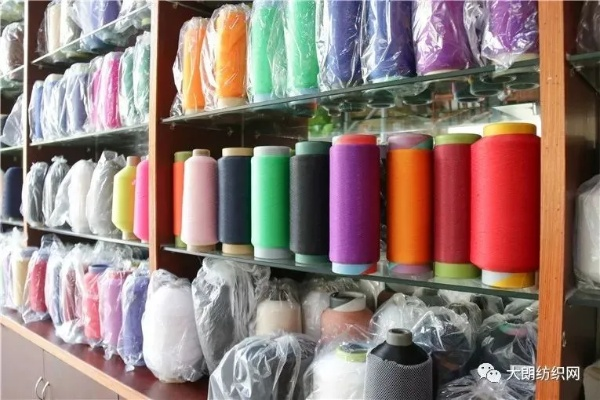The Evolution of Textiles:A Journey from Traditional to Modern
The evolution of textiles is a fascinating journey that has seen significant changes over time. Traditional textiles, such as silk and cotton, were woven by hand using simple tools and techniques. However, with the advent of industrialization, textiles have undergone a transformation, becoming more complex and diverse in their designs and materials. Today, textiles are used in a wide range of applications, from clothing to home decor, and are produced using advanced technologies such as computer-controlled knitting machines and dyeing processes. The modern textile industry is characterized by its ability to produce high-quality products at low cost, while also being environmentally sustainable. As technology continues to advance, we can expect to see even more innovative textile designs and materials that will revolutionize the way we live our lives.
Introduction: Textiles have been an integral part of human civilization for thousands of years, reflecting the cultural, social, and technological advancements that have shaped our world. From the earliest days of weaving simple fabrics to the sophisticated designs and technologies used today, textiles have evolved significantly. In this article, we will explore the journey of textiles from their humble beginnings to modern-day innovations, using a table to illustrate key milestones in the history of textiles.
I. Historical Background A. Prehistoric Periods (10,000 BCE - 3,000 BCE) The earliest evidence of textiles dates back to prehistoric times when humans began weaving plant fibers into ropes and baskets. These early textiles were primarily used for practical purposes such as hunting, gathering, and transportation.
B. Ancient Civilizations (3,000 BCE - 600 CE) As civilizations grew, textiles became more intricate and varied. Egyptians created intricate tapestries and woven garments made from wool and linen. Greeks and Romans developed finer embroidery techniques and dyed fabrics with vibrant colors.
C. Medieval Period (600 CE - 1500 CE) During the Middle Ages, textiles became more luxurious due to advances in weaving technology and dyeing processes. Cloth was often adorned with gold and silver thread, and silk was prized for its softness and durability.

D. Renaissance and Enlightenment (1500 CE - 1800 CE) In the Renaissance and Enlightenment eras, textiles became more refined and complex. Artists and designers experimented with new materials and techniques, creating beautiful tapestries, brocades, and other decorative items.
II. Technological Advancements A. Spinning and Weaving Technologies (1800 BCE - 1900 CE) The invention of spinning wheels and looms revolutionized textile production. By the 18th century, machines like the water frame and the mule had become commonplace, allowing for mass production of textiles.
B. Dyeing and Printing Techniques (1700 CE - 1900 CE) Advances in dyeing and printing techniques allowed for more vivid and complex patterns on textiles. Embroidery, embroidered designs, and printed cloth became popular during this period.
III. Modern Developments A. Industrial Revolution (1760 - 1840 CE) With the advent of the Industrial Revolution, textile production became more efficient and widespread. Machines like the power loom and the steam press transformed the industry, enabling mass production of cheap textiles.
B. Post-Industrial Revolution (1840 - Present) After the Industrial Revolution, textile production shifted towards luxury goods and high-end fashion. Innovations like synthetic fibers, eco-friendly dyes, and digital printing emerged, creating new opportunities for designers and manufacturers.
C. Sustainable Practices (Present) Concerns about environmental impact and ethical practices have led to the development of sustainable textiles. Organic cotton, recycled materials, and biodegradable dyes are becoming increasingly popular, reflecting a growing awareness of the importance of responsible production practices.
IV. Case Studies A. Luxury Brands (Fashion Designers) Example: Givenchy, Ralph Lauren, and Versace are all renowned luxury brands that use innovative textile techniques to create timeless collections. For instance, Givenchy's use of organic cotton and minimalist design has won international acclaim for their ability to combine aesthetic appeal with sustainability.
B. Eco-Friendly Textiles (Renewable Fibers) Example: Pima cotton is a renewable source of textile fiber that is grown in the American Southwest. It is softer than conventional cotton and requires less water to produce. This makes it a sustainable option for apparel and home furnishings.
V. Future Trends A. Biotechnology and Textiles (Future Prospects) As biotechnology advances, we can expect to see more innovative textiles made from natural materials like bamboo, hemp, and organic cotton. These textiles are not only sustainable but also have unique properties that make them ideal for specific applications.
B. Virtual Reality and Augmented Reality (Virtual Fashion Shows) With the rise of virtual reality and augmented reality technologies, we can expect to see more interactive and immersive experiences in the fashion industry. Virtual reality shows could allow consumers to virtually try on clothes before making a purchase, while augmented reality could enhance the shopping experience by adding personal touchpoints to online shopping platforms.
Conclusion: Textiles have come a long way since their humble beginnings. From ancient weaving techniques to modern innovations, textiles have evolved to reflect the progress of human civilization. As we continue to innovate and adapt to new technologies and environmental concerns, textiles will continue to evolve and shape our future.
詹阁纺织品,以其精湛的手工工艺、优质的材料选择和独特的品牌理念,成为了市场上的一颗璀璨明珠,我们就来深入了解一下这个品牌的故事和特点。
品牌历史与文化
-
品牌起源与发展 詹阁纺织品起源于某个历史悠久的纺织世家,经过多年的传承与创新,形成了独特的品牌理念和风格。
-
品牌文化内涵 品牌强调手工制作、环保理念、精益求精的品质追求,在詹阁纺织品中,每一件产品都体现了对细节的关注和对品质的追求。
产品展示
主要产品类别 詹阁纺织品涵盖各种纺织品,包括但不限于床上用品、家居装饰品、手工艺品等,每一类产品都有其独特的设计和工艺。
(表格形式展示)
| 产品类别 | 描述 | 图片展示 |
|---|---|---|
| 床上用品 | 高品质棉质睡袍、床单 | |
| 家居装饰品 | 手工刺绣抱枕、挂画 | |
| 手工艺品 | 特色毛巾、手工编织篮子 |
产品特点与优势 在詹阁纺织品中,每一件产品都体现了其独特的特点和优势,床上用品注重舒适性和透气性,家居装饰品则强调美观和实用性,这些产品都采用优质材料,注重细节处理,追求精益求精的品质追求。
案例分析
-
成功案例一:高品质床上用品系列 以某知名品牌为例,其推出的詹阁纺织品床上用品系列,以其高品质的材料和精湛的手工工艺,深受消费者喜爱,该系列的产品不仅舒适度高,而且设计时尚,能够满足不同消费者的需求。
-
成功案例二:环保理念在手工艺品中的应用 在詹阁纺织品中,手工艺品系列也充分体现了环保理念,该系列的手工艺品采用可回收材料制作,注重环保和可持续性,这不仅体现了品牌的责任感,也赢得了消费者的认可和喜爱。
消费者体验与评价
-
消费者体验感受 消费者在购买詹阁纺织品后,普遍感受到其产品的品质和设计都非常出色,他们认为这些产品不仅舒适度高,而且美观大方,能够提升他们的生活品质。
-
消费者评价与反馈 许多消费者在社交媒体上分享了自己的购买体验和评价,他们对詹阁纺织品的品质和设计都非常满意,他们认为这些产品不仅实用性强,而且具有很高的收藏价值。
品牌推广与营销策略
-
品牌推广策略 为了推广詹阁纺织品品牌,品牌方采用了多种推广策略,他们通过线上线下的方式宣传自己的品牌理念和产品特点,吸引更多的消费者关注和购买。
-
营销策略案例分析 在营销策略方面,品牌方注重利用社交媒体平台进行宣传推广,他们通过发布产品图片、视频和介绍文章等方式,吸引更多的消费者关注和购买,他们还定期举办促销活动,提高消费者的购买意愿和忠诚度。
未来展望与建议
展望未来,詹阁纺织品将继续秉承其品牌理念和特点,不断推出更多优质的产品和服务,品牌方还将继续加强品牌推广和营销策略,提高品牌的知名度和美誉度,建议品牌方可以加强与消费者的互动沟通,了解消费者的需求和反馈,不断优化产品和服务质量。
Articles related to the knowledge points of this article:
The Similarity and Differences Between Textiles and Yarn
The Dynamics of the Three Horses Textile Industry in China
Quality in Knitwear:A Comprehensive Guide to Assessing and Understanding



